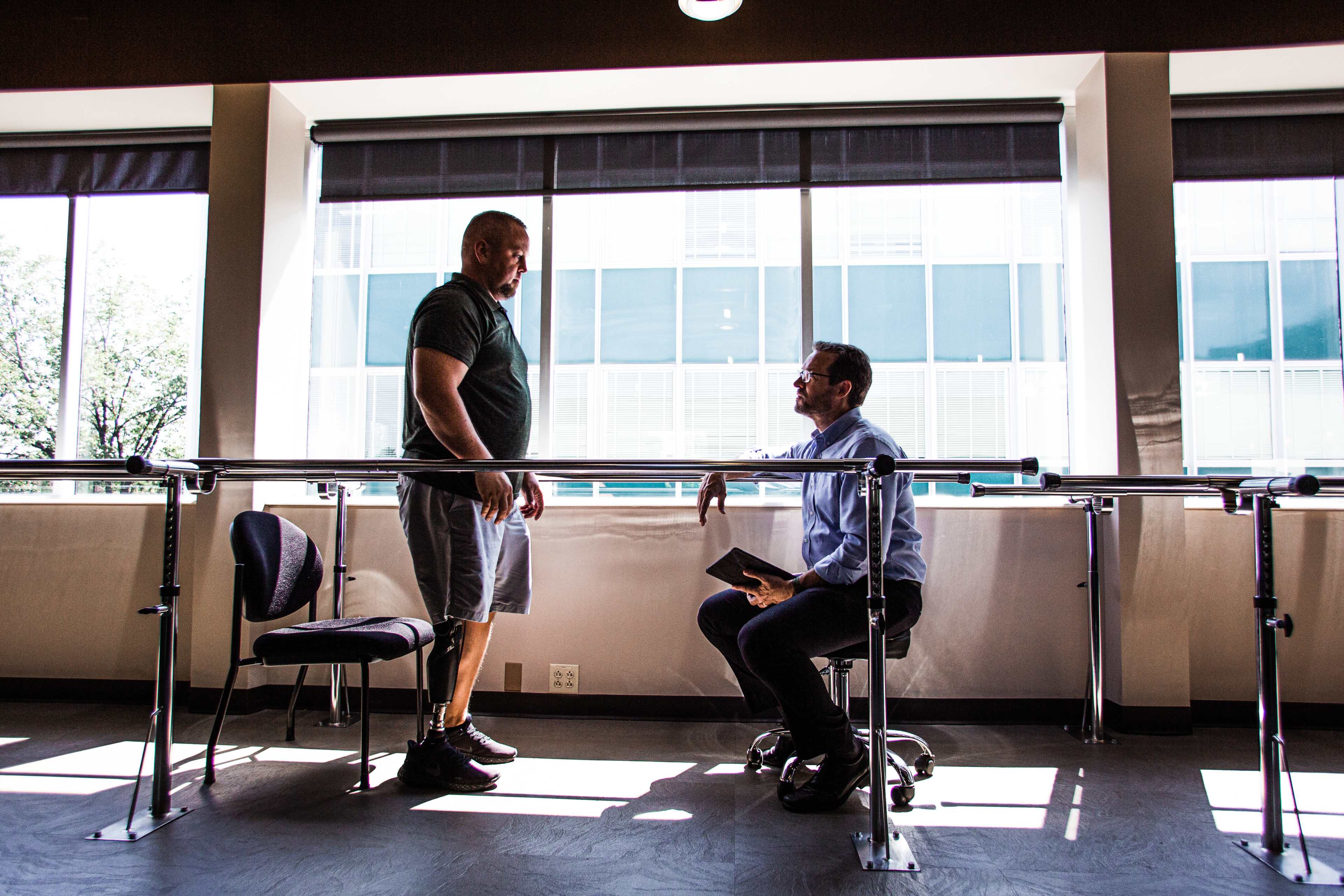PERCHÉ “POWER”?
La passione per una LIFE WITHOUT LIMITATIONS è il carburante dei nostri ingegneri e il risultato dei loro 15 anni di impegno sta cambiando le vite. Guarda il video qui sotto per conoscere meglio la storia del Power Knee e di come permette agli utenti di ottenere il massimo dalle loro protesi e dalle loro vite.
RIDUZIONE CONSUMO ENERGETICO
“Senza certi muscoli, le persone che usano una protesi consumano il 30-60% di energia in più rispetto alle persone con gli arti integri.” ¹
POWER KNEE riduce il consumo energetico della camminata² rispetto alle normali ginocchia con microprocessore.
MIGLIORA LA SIMMETRIA
Per la maggior parte delle persone che hanno arti diversi, camminare in maniera simmetrica è una sfida. Ogni giorno i risultati negativi incidono sulla forza e portano un maggior rischio di dolore alla parte inferiore della schiena e osteoartrosi.³⁻⁷
POWER KNEE migliora la simmetria* attraverso le attività, tra cui camminare, alzarsi in piedi e fare le scale.²⁸⁻¹⁰
In che modo POWER KNEE è diverso da un tipico ginocchio con microprocessore?
Ginocchia protesiche passive
Senza la forza, le ginocchia protesiche sono passive. Le ginocchia con microprocessore (MPK) fanno di più per controllare il movimento come, per esempio, dare resistenza mentre si è seduti e controllare la velocità dell’andatura. Negli ultimi 20 anni MPK hanno rivoluzionato la cura protesica migliorando la sicurezza e la mobilità, fornendo un controllo intelligente del movimento.
Ma c’era ancora un ingrediente che mancava ed è fondamentale per muoversi: la forza.
Ginocchia protesiche motorizzate
Power Knee is a new category of knee joint and brings with it a new era in prosthetic technology.
Power Knee è una nuova categoria di articolazione del ginocchio e inaugura una nuova era della tecnologia protesica.
Incrementando i benefici della tecnologia MPK, l’aggiunta della potenza si trasforma creando movimento. Grazie a un motore di azionamento armonico, è richiesta meno energia e i risultati sono un’andatura più naturale ed efficiente. Inoltre, sono possibili nuove funzioni come il sollevamento motorizzato per alzarsi o salire le scale.
Vuoi sapere qualcosa in più su Power Leg? Hai in mente un paziente il quale potrebbe beneficiare della Power Leg? O semplicemente hai altre domande sul prodotto?
Non esitare a compilare il modulo e entreremo in contatto il prima possible.
REFERENCES
- Genin JJ, Bastien GJ, Franck B, Detrembleur C, Willems PA. Effect of speed on the energy cost of walking in unilateral traumatic lower limb amputees. Eur. J. Appl. Physiol. 2008;103(6): 655
- Power Knee Mainstream Dynamic - Evaluation Report Synopsis, Össur hf, Steinþóra Jónsdóttir (2021). Data on file at Össur.
- Devan H, Tumilty S, Smith C. Physical activity and lower-back pain in persons with traumatic transfemoral amputation: a national cross-sectional survey. J Rehabil Res Dev 2012;49(10):1457-66.
- Devan H, Hendrick P, Ribeiro DC, Hale LA, Carman A. Asymmetrical movements of the lumbopelvic region: is this a potential mechanism for low back pain in people with lower limb amputation? Med. Hypotheses 2014;82(1):77–85.
- Matsumoto ME, Czerniecki JM, Shakir A, Suri P, Orendurff MS, Morgenroth DC. The relationship between lumbar lordosis angle and low back pain in individuals with transfemoral amputation. Prosthet and Orthot Int 2019 Apr;43(2):227-232. Epub 2018 Aug 18.
- Morgenroth DC, Orendurff MS, Shakir A, Segal A, Shofer J, Czerniecki JM . The relationship between lumbar spine kinematics during gait and low-back pain in transfemoral amputees. Am J Phys Med Rehab 2010;89(8):635–43.
- Harandi VJ, Ackland DC, Haddara R, Lizama LE, Graf M, Galea MP, Lee PV. Gait compensatory mechanisms in unilateral transfemoral amputees. Medical Engineering & Physics. 2020 Jan 7.
- Wolf, E. J., Everding, V. Q., Linberg, A. A., Czerniecki, J. M. & Gambel, C. J. M. Comparison of the Power Knee and C-Leg during step-up and sit-to-stand tasks. Gait Posture 38, 397–402 (2013).
- Highsmith, M. J. et al. Kinetic asymmetry in transfemoral amputees while performing sit to stand and stand to sit movements. Gait Posture 34, 86–91 (2011).
- Knut Lechler. Biomechanics of sit-to-stand and stand-to-sit movements in unilateral transfemoral amputees using powered and non-powered prosthetic knees - Congress Lecture [5038] Abstract [1459]. (2014).
